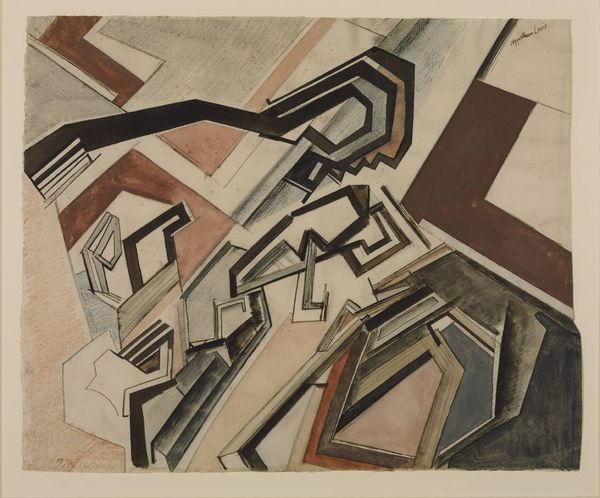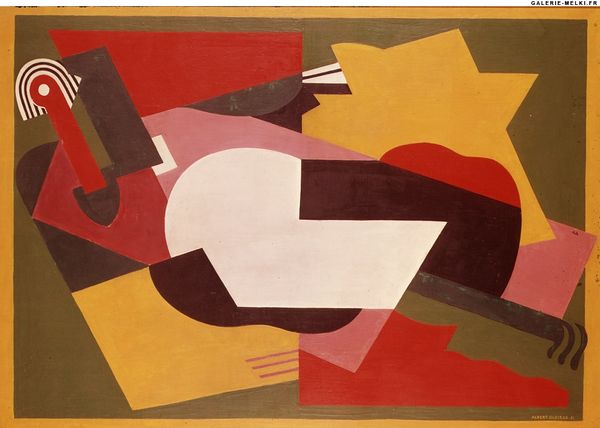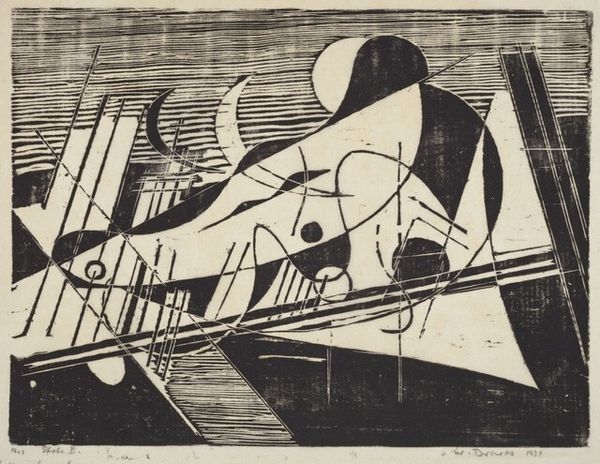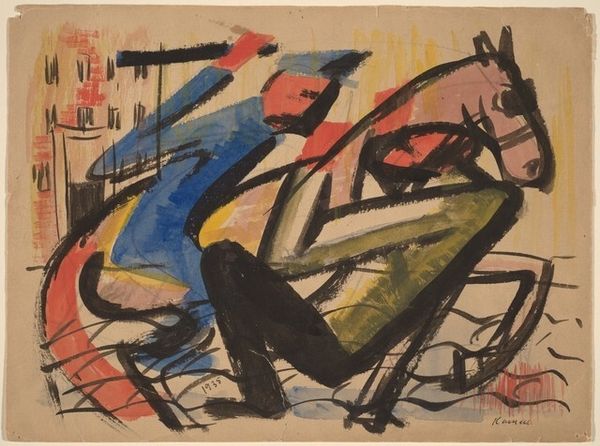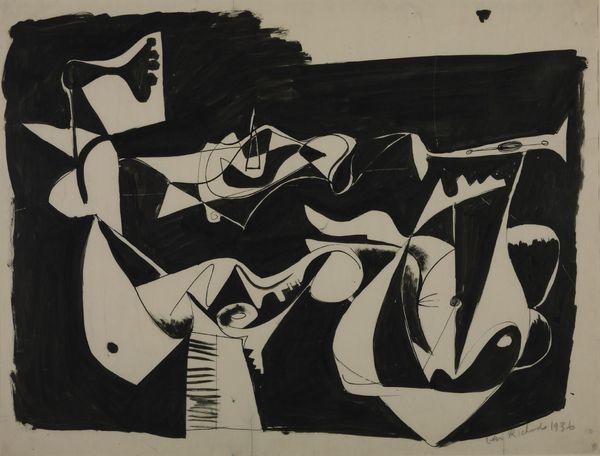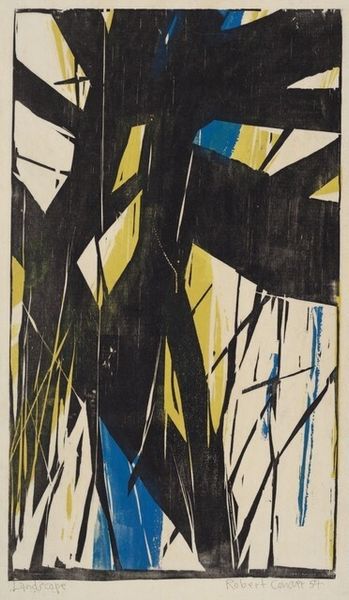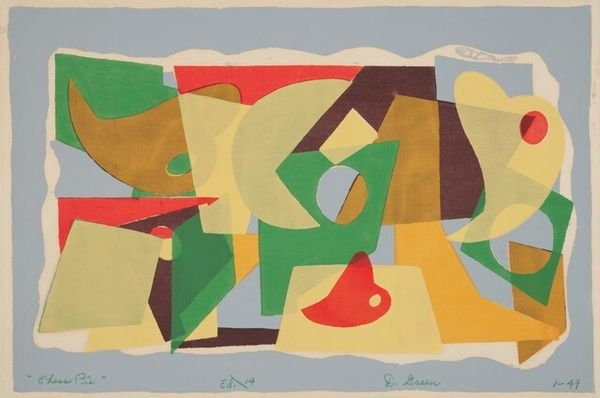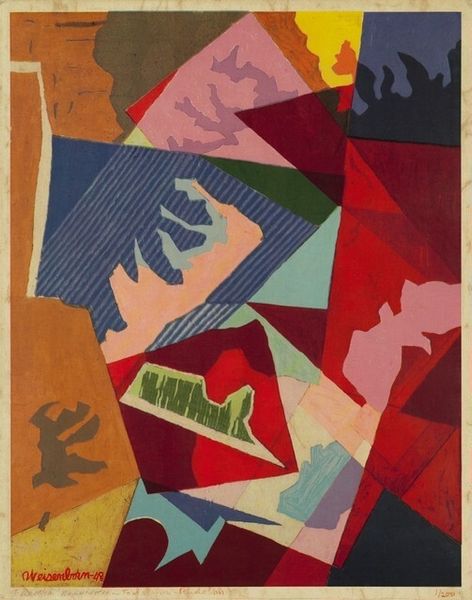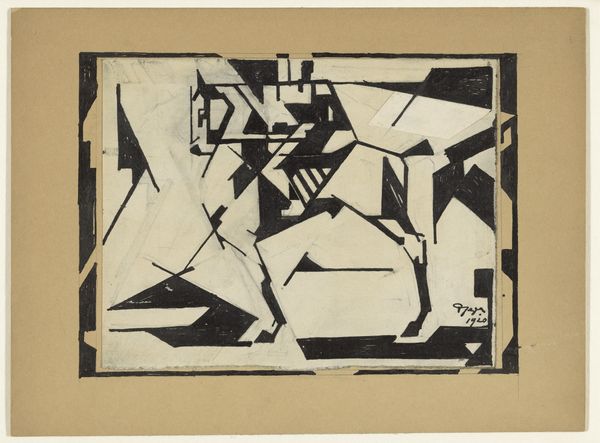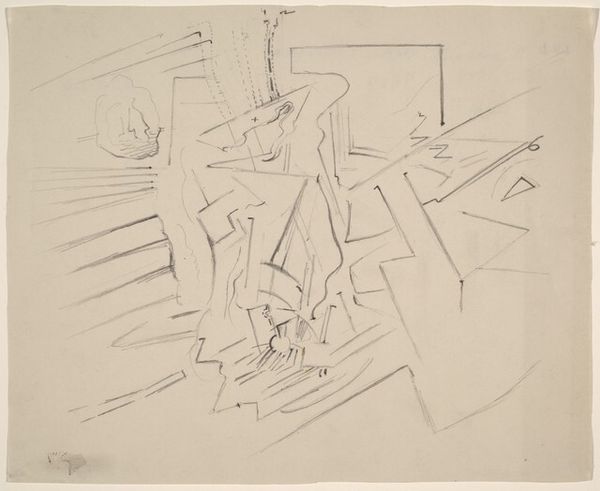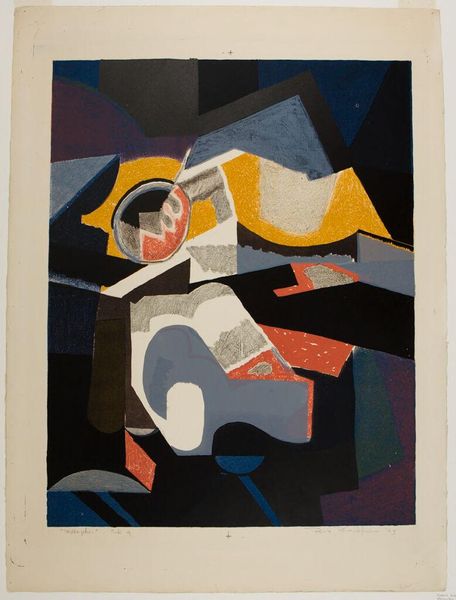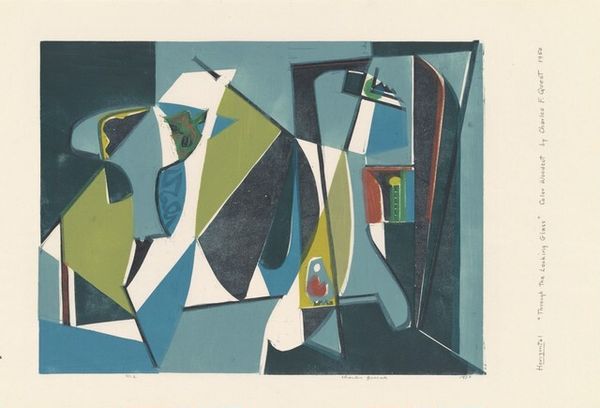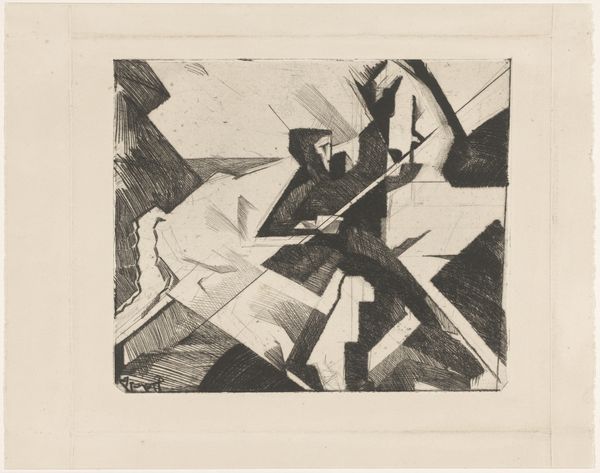
Dimensions: image: 24.13 × 35.56 cm (9 1/2 × 14 in.) sheet: 29.21 × 42.55 cm (11 1/2 × 16 3/4 in.)
Copyright: National Gallery of Art: CC0 1.0
Editor: We're looking at Paul B. Arnold's "Mal de Mère," a woodcut print from 1955-1956. The composition is quite striking, with stark contrasts and fragmented forms that convey a real sense of unease. What's your take on this piece? Curator: Considering this piece through a historical lens, especially given its German Expressionist influences and the post-war context, the title "Mal de Mère," or "Evil Mother," becomes particularly potent. It forces us to confront the societal expectations placed on women and motherhood in that era. This print likely speaks to broader anxieties surrounding social roles and the individual’s place within them. Editor: I notice a tension between abstraction and figuration. Is that something that was particular to the artist's concerns, or to the time? Curator: That tension is definitely reflective of broader artistic movements, but also the specific anxieties within post-war German society. The fractured figures, rendered through the stark medium of the woodcut, speak to the fragmentation and moral ambiguities that many experienced. Note how abstraction allowed artists to critique social structures without resorting to direct representational modes. The title invites an interpretation centered on a central figure. The inclusion of those heraldic looking patterns gives the depicted figure, or figures, some weight to bear socially. Do you see them carrying out an historical function? Editor: I hadn't thought about it that way. Now I am looking at the patterns less as decoration, and more as symbols. Thank you. Curator: The role of symbols and their evolving meanings within the socio-political landscape really enrich the print. Considering art this way highlights its public role and the active choices the artist made within a changing historical climate. Editor: It is definitely food for thought. I can see how understanding history deepens your engagement with the art. Curator: And I can see how closely observing the details in this artwork helped you consider historical implications within art in the first place.
Comments
No comments
Be the first to comment and join the conversation on the ultimate creative platform.
